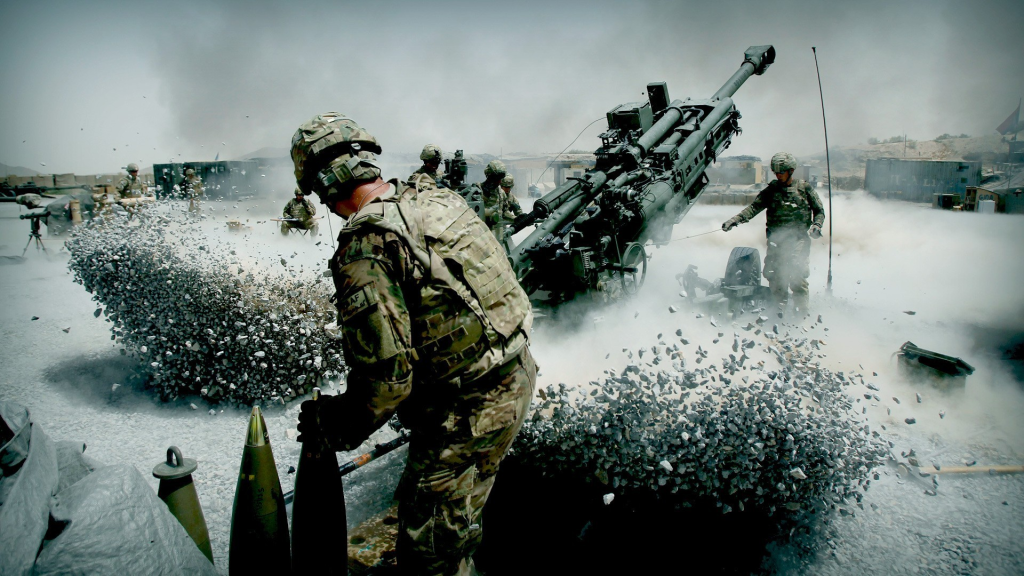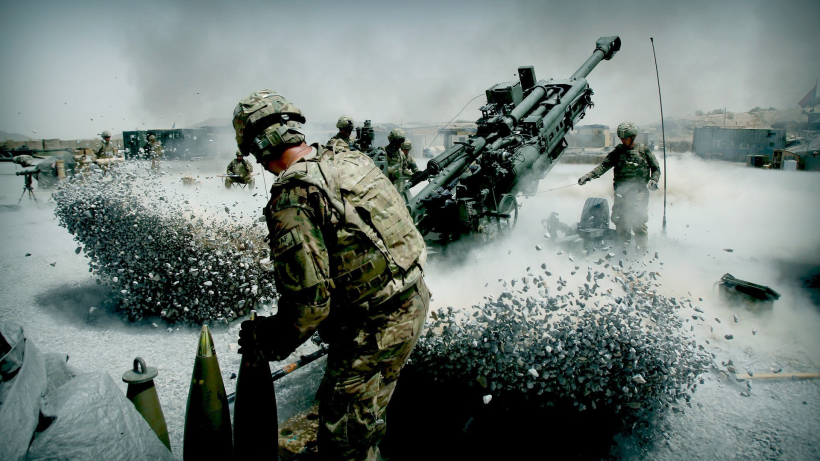
Today’s post is a continuance of our tribute to the brave men and women who have fought/currently fight/will fight in the future to protect our freedoms. We are going to briefly take a few minutes or so to talk about some of the scientific considerations in the operation of Howitzers, like the M777 pictured above, and then we are going to finish off this post a little bit shorter than most and ask that you take a moment to think about the veterans who have risked their lives in the past and continue to do so in service to their country. Without further ado, let us begin by discussing the role of the Howitzer. A Howitzer is kind of like the Goldilocks of lightweight field artillery pieces. A cannon fires its projectile along a relatively straight, long range path. A mortar lobs its projectile high up into the air, with a very short range. The Howitzers find the middle ground, putting rounds down range at pretty long distances through mid-range angles of elevation, making the Howitzer “just right” for placing rounds on target in situations where there may not be a clear line of sight to the enemy, but you’re well within effective field artillery range.
Planning the Trajectories
When it comes time to fire the Howitzer, the angles (relative to the ground & side-to-side) that the artillery will be firing at & sometimes the propellant charge too, must be adjusted to optimize the balance between parameters such as muzzle speed, internal wear of the tube (barrel), propellant temperature, propellant burn time, projectile weight & aerodynamic characteristics, atmospheric temperature & density, range & elevation change to target, wind speed and direction, projectile spin-induced drift, and the rotation of the earth (after all, the M777 has an effective range of 15-25 miles, depending on the model). Now this is a lot to take into account for each shot, so generally speaking, these calculations are performed by computer at the start of the engagement for a particular firing solution; however, these fundamental ballistic calculations are still taught in most military artillery schools.
Firing the Howitzers
The actual firing of the projectile involves setting off the primer, which in turn ignites the propellant, which quickly burns, building up pressure in the tube, launching the projectile through the muzzle, sending it on its way down range, where the fuse embedded in the projectile’s nose will act as a detonator for the explosive charge within the projectile. This all happens very quickly & depending on the skill level of the team manning the artillery (after all, these are crew-served weapons), the M777 could get off as many as 5 rounds per minute. It must also be realized that, as we know from Newton’s 3rd Law of Motion, every action has an equal and opposite reaction. In firearms & artillery alike, this reaction comes in the form of recoil, and in the case of the Howitzers, very large amounts of recoil at that. Some of this recoil is taken up by hydraulic damping cylinders (within which the energy of the recoil is distributed into the hydraulic fluid as it is partially compressed), but much of it is directed through the support structure & into the ground (hence the rocks, dirt, and basically everything nearby being kicked up in the picture above). There will of course, be a settling time for the tube of the artillery piece to come back to rest, as if another shot was fired off immediately after the first one, the continuing vibration and movement of the tube would throw off the shot placement. Luckily, it takes enough time to reload for most of this disturbance to die out prior to the next shot.
The Operators, Themselves
Now, as you hopefully can see, firing one of these pieces of machinery is a lot of work & requires attention to detail & perhaps above all else, skill & the ability to work as a team. Imagine doing all this under the stress of fighting an over-the-horizon enemy in a distant, often hostile land, & knowing that there may be infantry troops counting on you to suppress the enemy long enough for them to get to safety or for you to reduce the enemy’s numbers or capabilities enough for them to be able to stand a fighting chance. Pretty amazing when it comes right down to it. Now please take a few minutes of your time to think about how warriors like the ones pictured above, with families here stateside, are willing to risk their lives for people like you and me…people that they may never meet, but regardless, they will defend our liberties at all costs. It’s pretty awesome to know that these brave men & women are out there doing everything they can to support our freedom, so please take some time out of your day to support them back.
To our veterans, thank you for your service & sacrifice, as well as for those of your family, friends, and brothers/sisters in arms.

